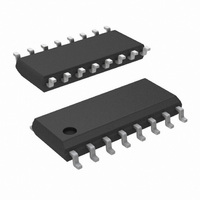DS91M047TMAX/NOPB National Semiconductor, DS91M047TMAX/NOPB Datasheet - Page 5

DS91M047TMAX/NOPB
Manufacturer Part Number
DS91M047TMAX/NOPB
Description
IC LINE DRVR MLVDS QUAD 16-SOIC
Manufacturer
National Semiconductor
Type
Line Driver, Transmitterr
Datasheet
1.DS91M047TMANOPB.pdf
(12 pages)
Specifications of DS91M047TMAX/NOPB
Number Of Drivers/receivers
4/0
Protocol
LVDS
Voltage - Supply
3 V ~ 3.6 V
Mounting Type
Surface Mount
Package / Case
16-SOIC (3.9mm Width)
Lead Free Status / RoHS Status
Lead free / RoHS Compliant
Other names
DS91M047TMAX
Available stocks
Company
Part Number
Manufacturer
Quantity
Price
Company:
Part Number:
DS91M047TMAX/NOPB
Manufacturer:
NS/TI
Quantity:
130
t
t
t
t
t
t
t
t
t
t
t
t
f
PHL
PLH
SKD1
SKD2
SKD3
SKD4
TLH
THL
PHZ
PLZ
PZH
PZL
MAX
Switching Characteristics
Over supply voltage and operating temperature ranges, unless otherwise specified.
Note 11: The Electrical Characteristics tables list guaranteed specifications under the listed Recommended Operating Conditions except as otherwise modified
or specified by the Electrical Characteristics Conditions and/or Notes. Typical specifications are estimations only and are not guaranteed.
Note 12: Typical values represent most likely parametric norms for V
product characterization and are not guaranteed.
Note 13: Specification is guaranteed by characterization and is not tested in production.
Note 14: t
going edge of the same channel.
Note 15: t
Note 16: t
devices at the same V
Note 17: t
recommended operating temperature and voltage ranges, and across process distribution. t
Note 18: C
Symbol
SKD1
SKD2
SKD3
SKD4
L
includes fixture capacitance and C
, |t
, Channel-to-Channel Skew, is the difference in propagation delay (t
, Part-to-Part Skew, is defined as the difference between the minimum and maximum differential propagation delays. This specification applies to
, Part-to-Part Skew, is the differential channel-to-channel skew of any event between devices. This specification applies to devices over
PLHD
Differential Propagation Delay High to Low
Differential Propagation Delay Low to High
Differential Pulse Skew |t
Channel-to-Channel Skew
Differential Part-to-Part Skew
(Constant T
Differential Part-to-Part Skew
Rise Time
Fall Time
Disable Time High to Z
Disable Time Low to Z
Enable Time Z to High
Enable Time Z to Low
Maximum Operating Frequency
− t
DD
PHLD
and within 5°C of each other within the operating temperature range.
|, Pulse Skew, is the magnitude difference in differential propagation delay time between the positive going edge and the negative
(Note
(Note
A
and V
13)
13)
DD
)
Parameter
D
PHL
includes probe capacitance.
(Note
− t
(Note
(Note
(Note
PLH
13,
|
(Note
13,
17)
Note
11,
Note
Note
DD
13,
15)
= +3.3V and T
16)
Note
12,
5
Note
14)
PLHD
A
18)
or t
= +25°C, and at the Recommended Operation Conditions at the time of
R
C
C
Figures 6, 7
R
C
C
Figures 8, 9
(Note
PHLD
SKD4
L
L
D
L
L
D
= 50Ω
= 5 pF,
= 50Ω
= 5 pF,
= 0.5 pF
= 0.5 pF
) among all output channels.
is defined as |Max − Min| differential propagation delay.
13)
Conditions
Min
125
1.5
1.5
1.1
1.1
0
0
0
0
Typ
3.1
3.1
0.8
2.0
2.0
70
70
7
7
7
7
www.national.com
Max
12.5
12.5
12.5
12.5
140
200
5.0
5.0
1.5
3.5
3.0
3.0
Units
MHz
ns
ns
ps
ps
ns
ns
ns
ns
ns
ns
ns
ns











